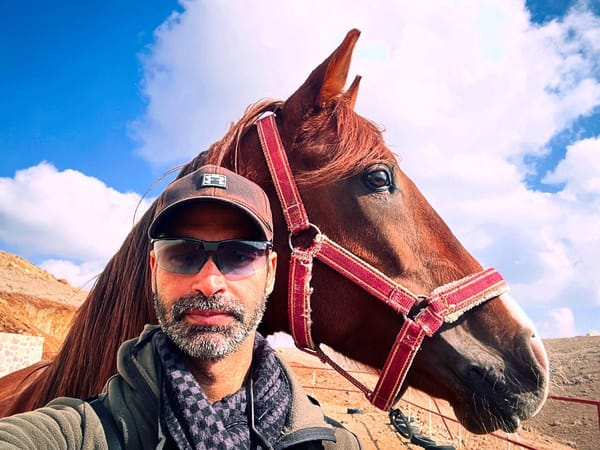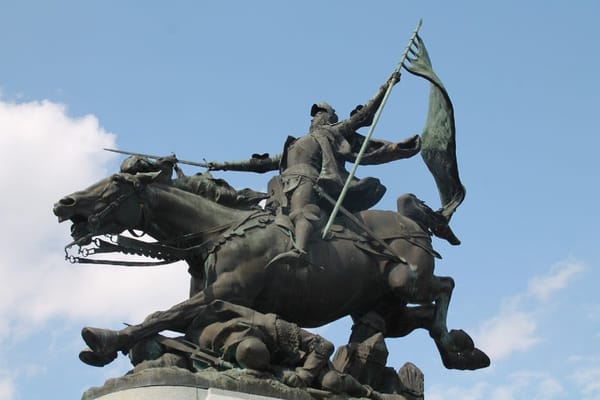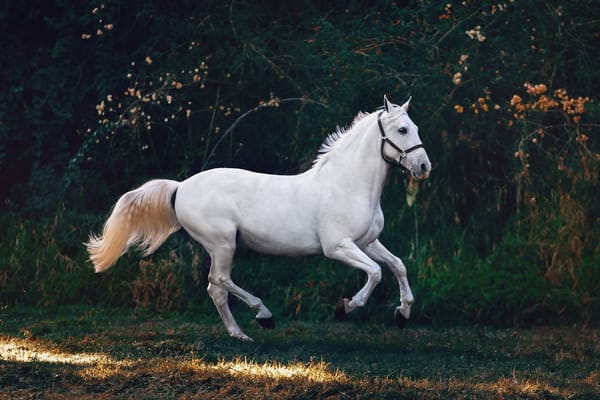Rahvan Horses: A Glimpse into Their Origin, Features, and Global Presence
Table of Content
Rahvan horses, a breed deeply rooted in the traditions and cultures of the regions they hail from, are a symbol of endurance, agility, and speed. Known for their unique gait and resilience, these horses have played a vital role in the lives of the people who have bred and raised them for centuries.
This blog post delves into the origin of Rahvan horses, their distinctive features, and the countries where they are primarily found.
Origin of Rahvan Horses
The Rahvan horse breed traces its origins to the ancient steppes of Central Asia, where horses were first domesticated thousands of years ago. The breed's name, "Rahvan," is derived from the Turkish word for "amble," reflecting their characteristic gait.
These horses are believed to have been developed by the Turkic nomadic tribes who required a horse that could cover long distances at a steady pace, ensuring both endurance and comfort for the rider.
As the Turkic peoples migrated westward, they brought their horses with them, and the breed gradually spread across the regions that now comprise modern-day Turkey, Iran, Azerbaijan, and the Balkans.
Over the centuries, Rahvan horses have been refined through selective breeding, emphasizing traits like stamina, speed, and a smooth gait.
Distinctive Features of Rahvan Horses
Rahvan horses are renowned for their unique gait, known as the "rahvan" or ambling gait, which sets them apart from other horse breeds.
This gait allows them to move at a faster pace than a walk but slower than a trot, providing a smooth and comfortable ride over long distances. This makes them particularly suited for long journeys, making them a favorite among travelers and messengers in the past.
Physical Characteristics:
- Size: Rahvan horses are generally medium-sized, standing between 14.2 to 15.2 hands high (about 145 to 157 cm).
- Build: They have a muscular yet lean build, designed for endurance rather than brute strength. Their bodies are compact, with well-defined legs and a broad chest.
- Head: The head of a Rahvan horse is often finely chiseled, with expressive eyes and a straight or slightly convex profile.
- Coat: The breed's coat is usually short and shiny, with colors ranging from bay and chestnut to gray and black.
Gait and Movement:
The most distinguishing feature of Rahvan horses is their ambling gait, which is a four-beat lateral gait. This means that the horse moves its legs on one side of the body together before the legs on the opposite side. This gait is faster than a walk but more controlled and less jarring than a trot, making it ideal for covering long distances without tiring the rider.
Countries Where Rahvan Horses Are Found
Rahvan horses are predominantly found in regions that were historically influenced by Turkic culture. Today, they are most commonly associated with:
Turkey
As the heartland of the Rahvan horse, Turkey has a rich tradition of breeding and racing these horses. Rahvan racing is a popular sport in rural areas, particularly in the western and central parts of the country.
Azerbaijan
In Azerbaijan, Rahvan horses are prized for their endurance and are often used in traditional equestrian sports. The breed has been a part of Azerbaijan's cultural heritage for centuries.
Iran:
Known for its diverse horse breeds, Iran is home to the Rahvan horse, particularly in the regions bordering Turkey and Azerbaijan. The horses are used in traditional celebrations and sports.
Balkans:
In countries like Bulgaria and Macedonia, where Turkic influence was strong during the Ottoman Empire, Rahvan horses can still be found. These horses are often involved in local festivals and equestrian events.
Conclusion
The Rahvan horse is more than just a breed; it is a living testament to the endurance and adaptability of the Turkic peoples who developed it. With its unique ambling gait, strong physique, and rich cultural significance, the Rahvan horse continues to be a symbol of tradition and heritage in the regions where it is found. As these horses gallop into the future, they carry with them the legacy of a bygone era, ensuring that the traditions of their origin endure.
Whether you're a horse enthusiast or simply interested in the cultural history of these regions, the Rahvan horse is a fascinating breed that deserves recognition and appreciation for its unique qualities and historical significance.










